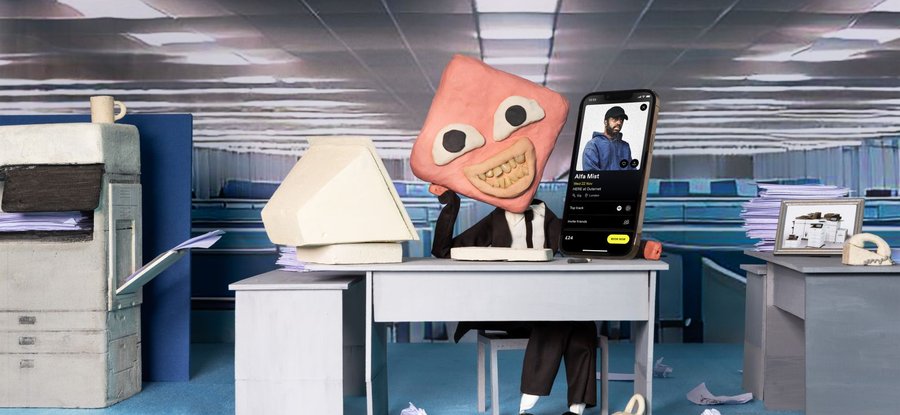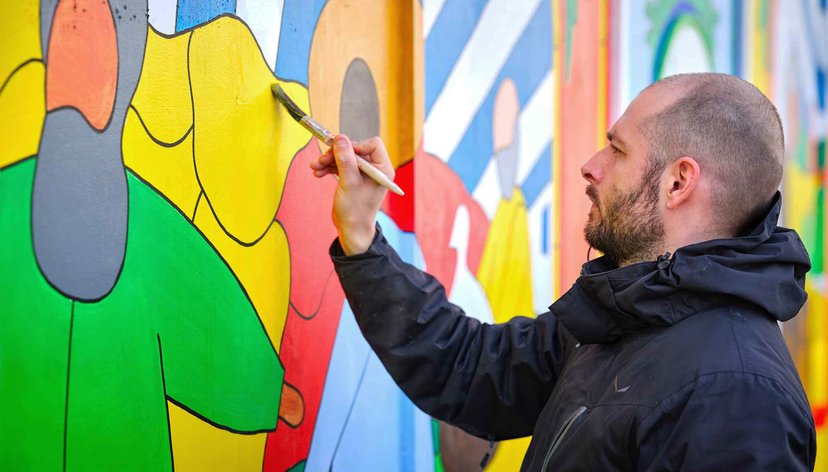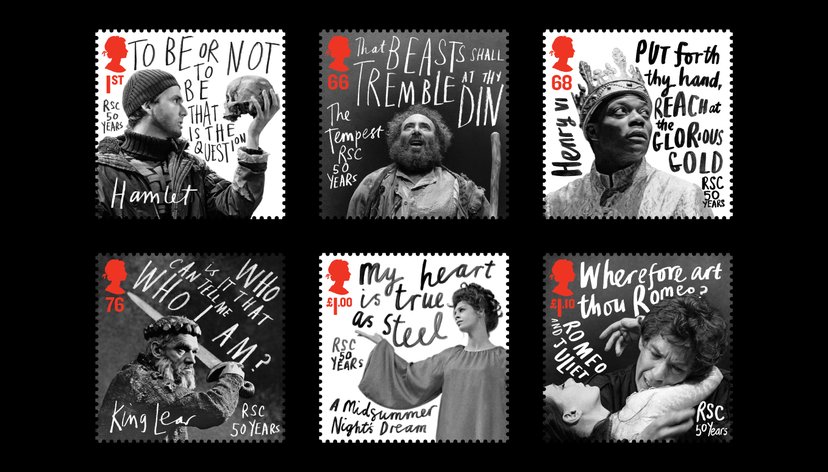
Key details
Date
- 23 January 2024
Author
- Lisa Pierre
Read time
- 6 minutes
Jennifer Kidd (MA Animation 2018) is an art director, set designer, prop maker, set dresser and the owner of Scale Model Studios. Jennifer began her career in the animation industry in 2016 where her first job was on the ‘Night of the Trampires’ movie, followed by ‘Isle of Dogs’.
“There is something magical about making something in miniature and making it so well that when photographed it can be hard to tell if it’s real or not”
Director at Scale Model Studios
She has worked on short commercial animations, music videos, kids TV series and feature films as a prop maker and set dresser, and continues to create new work of her own in between productions relishing the chance to develop new techniques and experiment with new materials.
Jennifer has worked all over the UK and on international projects in China. In 2020 she launched Scale Model Studios (SMS) an animation company that specializes in props, miniatures, sets & puppets for stop motion animation and live action productions. Recent projects include the BBC Winter Olympics, a Rag’n’Bone Man video, Capri Sun and Deliveroo.
Now, in 2024 SMS has branched out into being a full in-house animation studio with a roster of animation directors.

Jennifer Kidd Director at Scale Model Studios
Animation has various forms and often traditional animation images are drawn or painted by hand. How did you decide to work on small scale models?
I have always loved making small things, sculpting and painting. Of course I started out loving drawing and did so for years, but as soon as I started sculpting and painting, that was it, there was no turning back. There is something magical about making something in miniature and making it so well that when photographed it can be hard to tell if it’s real or not.
The level of intricacy on some of the props you have made is unbelievable. How did you go about making the tiny newspapers and magazines, for example, that you used in your final project?
It all starts with R&D (research and development) for my final year project at the RCA. This animation was set in the ‘80s in Dublin so it was important to look back at news clippings and images to see what films, concerts and events were on at the time. From there I digitally recreated them and printed them out on a smaller scale, ripped and crushed them and added dirty water to age them. I then glued them onto the wall as they were drying, ripped them off and added another poster to overlap, repeated the process until the wall looked like it had years of posters being added and torn down. Ripped the edges off, added graffiti etc and more dirt. I wanted to make the set look as realistic as possible as it adds to the narrative and makes the whole thing look more realistic.
Do you think animation receives the right recognition as part of visual culture? Given recent exhibitions such as ‘Small is Beautiful’ and older works such as ‘Hell’ by the Chapman brothers do feel there is a lot of scope for small scale modelling to move into the realms of ‘high art’?
Animation has always been appreciated for its difficulty in production and the beautiful escapism it can provide, but high art!? I think that is changing now, I have seen a lot of VR interactive digital animation exhibitions which have been great in addition to one Nathalie Djurberg who is a stop motion animation artist. I have followed her work for years and her work encouraged me to continue creating art that incorporates stop motion.
My background is in Fine Art and for years I was a practicing artist doing residencies in Berlin and exhibiting internationally, collaborating with performance artists such as Yingmei Duan who often works alongside Marina Abramovich.
Do you feel there has been a move away from the post-Millennium lean to CGI and we are seeing more small scale modelling used in films again?
Yes, when new forms come in, there is a natural inclination to explore those new mediums and what they can provide, especially when keeping up with new trends and technology, but taste and style brings us back to old forms such as 2D and stop motion.
We are now seeing a resurgence in miniatures and mixed media especially as it’s so versatile. And we are also seeing a resurgence in the low-fi look of the early ‘90s which is easily achieved through model making.
With so many classic film moments being achieved through modelling and animation; the cityscapes in ‘Bladerunner’, the skeletons from ‘Jason and the Argonauts’ and ‘Shaun the Sheep’ who is now off to space – what are some of your own favourite films that utilise these techniques?
I love to see new techniques in animation and a lot of animated films always strive to try something new that sets them apart.Something that I absolutely loved seeing was ‘Angry Aggy’ from ‘Paranorman’ . Here LAIKA used 3D printing and printed digital glitching to accentuate her frustration.
I also love looking at the puppets made at LAIKA and the detail that goes into the clothing for each of their puppets. It's inspiring to see such levels of detail, but also detail that functions for the animator.
Have mainstream perceptions of animation being ‘cartoons for children’ changed in recent years?
It’s changed a lot in recent years, animation is a great form of entertainment and has not been limited to cartoons for kids. ‘The Simpsons’ and ‘South Park’ are great examples of this. We also have ‘Rick and Morty’ and many other series and short animations etc. Animation is a great form of communication and a great way of carrying a narrative. Quite often when a narrative is difficult it takes the edge off difficult stories and allows for them to be accepted by the viewer. But there has always been animations that were for adults and this goes back as far as the early days of animation.
Do you think that hobbies such as miniature wargaming and doll housing feed into your industry or do you see these as separate, amateur, strands to small scale modelling?
They all feed into it. Once someone has an interest in making miniatures for animation, any kind of experience in making our paintings on a small scale will definitely add to your portfolio when applying.A lot of model makers that I have on productions have experience as teenagers in Warhammer painting which has given them great attention to detail.
You use a lot of Styrofoam and silicone in your work. Do you think the products you use are environmentally friendly?
Being eco-friendly can be difficult in animation. Some materials cannot be avoided such as styrofoam, materials that are light weight are sometimes necessary. I have avoided using certain materials such as resins and I have reduced the amount of silicone that I use as well but they cannot be completely avoided due to the nature of how props are made and what function they need to serve on set. Some props are kept in storage and get repurposed while others need to be binned or recycled depending on IP restrictions.
Has animation changed as there is more screen access and more forms of viewing via mobile devices and focus on apps such as Tik Tok and Instagram which are visually based?
Yes, social media has had a great impact on animation. There are some shoots that we do here where we specifically film in the social media aspect ratios as this is the only place where they will be seen and therefore we set dress and animate within these frames. But it has also increased the need for short form animations and small low-fi productions, so a lot more is being created.
Tell us more about SMS’s recent project No Two Ways - All the small things?
I thoroughly enjoyed participating in this amazing project with a dynamic London-based design company eager to venture into experimental territory. The project involved carpeting a live-action scene within a house, which we replicated on a miniature scale. Our focus was on recreating the bedroom and exterior to ensure seamless transitions between the live action and miniature segments.
To enhance the uniqueness of their signature boxes, we crafted them from paper and hand painted their patterns. When it came to the shoes, the initial plan was to take a low-fi sculpting approach. However, we proposed a more innovative solution of digitally sculpting and 3D printing followed by meticulous miniature painting. This approach not only added a cutting-edge dimension to the project but showcased our commitment to pushing creative boundaries.
What did you love most about working on the new DICE campaign?
I loved the low-fi approach for the DICE campaign that really harked back to the late ‘90s early 2000s grunge look which I remember very well growing up. This was a real trip down memory lane revisiting old styles, posters and techniques. The director, Luke Casey, really wanted to have that handmade look to this campaign so we really focussed on recreating that while also maintaining a high quality for the puppets.
The stop-motion element with the brain was a nice touch with those lovely false teeth and overall it was a great shoot to work on as with live action puppeteering, you can try so many things on the day which really pushed our skillset and tested production speed.It was great to see it all come together, especially with those hairy band members, those were a personal favourite.
How did the Creative Brands Accelerator, InnovationRCA’s programme offering business mentoring, commercial training and advice to RCA alumni, help you?
This course helped me set up my business, Scale Model Studios, professionally. It gave me the tools I needed to better advertise, organise and structure my business.The Creative Brands Accelerator also better prepared me for accounting and hiring as my business requires the services of many skilled model makers and animators for each production.
The Accelerator also allowed me to network with other business owners within the course and, while they were mainly product based services, we still had many areas of common ground that we could help each other with - luckily we have stayed in touch since the end of the course.


